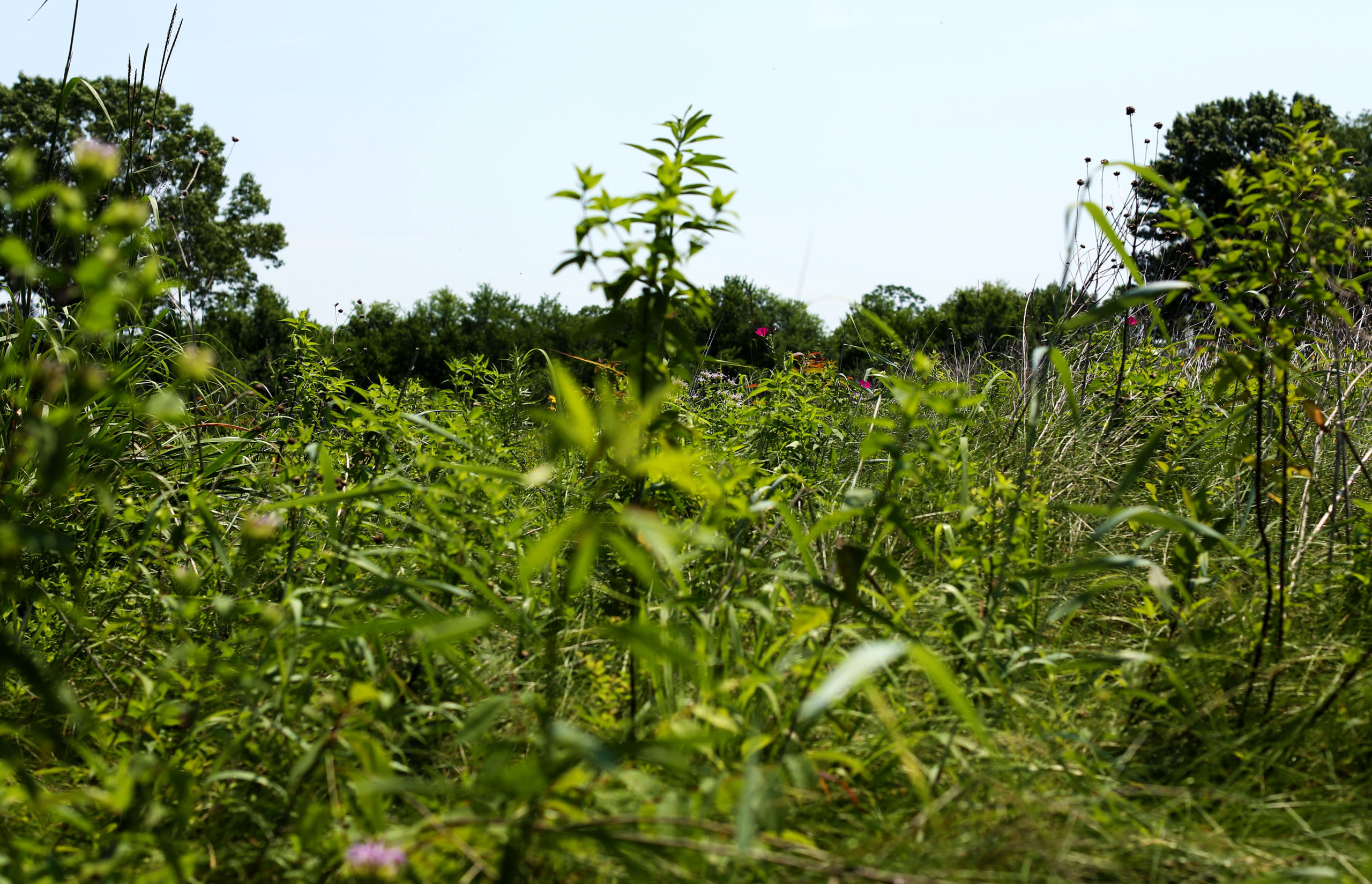Columbia Audubon Nature Sanctuary models climate responsibility through restoring biodiversity

The Columbia Audubon Nature Sanctuary has seen the return of dozens of species of plants, birds, and invertebrates since Audubon Society members finished seeding native grasses and flowering plants in 2016.
Visitors to the natural site can walk through acres of prairie, over a boardwalk and into riparian woodlands that are home to turtles, foxes, hawks and other wildlife.
Increasing the scope of natural areas and restoring pastures is one way organizations and cities across the country can mitigate the effects of climate change caused by past development and increase awareness of nature.
Natural areas and wilderness can serve as a response to climate change and contribute to climate change adaptation by increasing biodiversity and landscape connectivity, according to the U.S. Forest Service. In addition to protecting the ecological assets of a region, wilderness areas also provide opportunities for humans to connect to the natural world.
The Audubon sanctuary hasn’t always been such a natural area. Bill Mees, a Columbia Audubon member, said the initial honeysuckle removal took three years plus a few more for prairie plants to become established.
“Our organization is trying to make available to the community an area where they can go and enjoy nature, maybe in a way that doesn’t have so many invasives and doesn’t have so many other distractions: no dogs, no bicycles, narrow paths through the trees,” Mees said.
Visitors to the site can see prairie grasses and wildflowers such as purple poppy mallow, goldenrod, rattlesnake master and more. Native trees like persimmons, paw paws and eastern red cedar dot the prairie. There are even edible wild plants to see at certain points in the year. Gooseberries and chanterelle mushrooms are scattered around the woodland understory’s narrow path. Mees said the Audubon Society asks foragers to refrain from harvesting the edible natives in the area so that birds and other creatures can feed on them, and so other people can learn about them.
“We’re trying to make it as natural as possible because there aren’t that many natural places close by,” he said.
Natural areas like prairies also reduce strain on Columbia’s stormwater system, which engineering specialist Tom Wellman said is in need of constant maintenance.
One effect of the increased temperatures caused by climate change is that more moisture from the oceans evaporates into the air. With this higher humidity, the air retains more heat, increasing the likelihood and intensity of thunderous downpours, according to previous Missouri Information Corps reporting.
When extreme downpours occur, sinkhole-like cavities can sometimes form above old sections of decaying corrugated metal pipes that span dozens of feet in various locations across town, he said. Wellman also noted that occasionally these corrugated pipes can be swept away in the flooding.
“It can be really dangerous,” he said, “a pipe could get washed out at night in a roadway and somebody driving might not see it.”
Wellman explained that protecting the water holding capacity of a floodplain is crucial to mitigating damage to the community. If a floodplain can absorb a sudden downpour, it can mitigate or prevent damaging flash floods. One way to do this is by adding plants whose structure is mostly underground, such as native grasses.
The extensive root systems of a prairie can absorb up to 9 inches of rainfall per hour before runoff occurs, and one acre of prairie can produce 26,000lbs of roots.
“I know grasses aren’t very photogenic,” Nadia Navarrete-Tindall, a native plant specialist with Lincoln University, said, “but they’re very important. They reduce temperatures by absorbing carbon and nitrogen in their roots.”
Tindall stressed the importance of biodiversity in these types of restoration projects. Even among native plants, it’s possible that some will spread more aggressively than others, she said. Big bluestem, she said, might take over an area if wildflowers and other natives aren’t established first, so diversity needs to be carefully managed.
Diversity in native plants attracts a variety of pollinators, insects and grubs that birds depend upon while caring for their young, she said. Tindall quoted Doug Tallamy, a professor of entomology and wildlife ecology at the University of Delaware, in saying that it can take up to 9,000 grubs to feed a clutch of baby chickadees.
Between 20% and 30% of plant and animal species are likely to be at an increased risk of extinction if increases in global average temperatures exceed 2.7 to 4.5° F, according to the U.S. Forest Service. As climate change impacts the reproduction of plants and animals, biodiversity will prove crucial to protecting ecosystems for future generations.
“If every homeowner would adopt some natives, it would create corridors for butterflies and critters,” Tindall said. “It helps to have these jewels of nature in the middle of town.”
